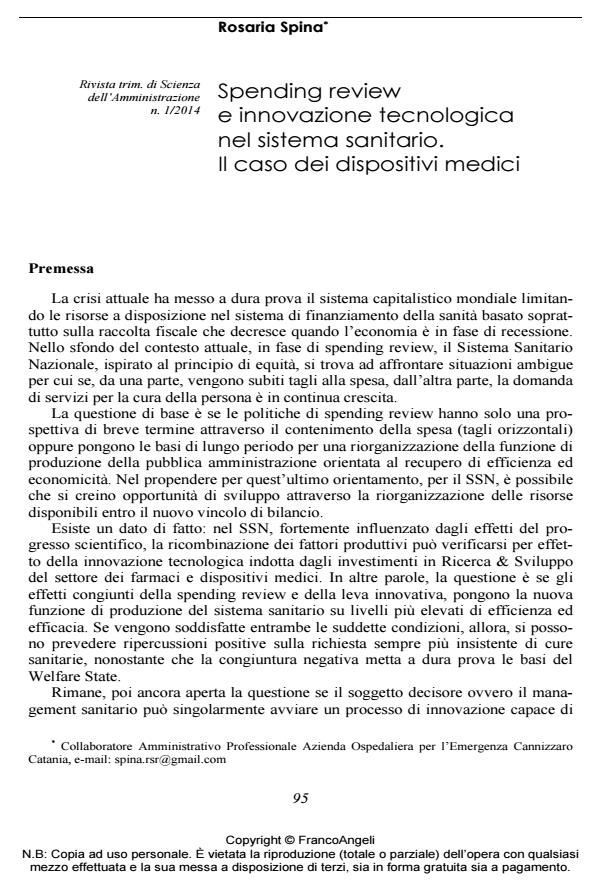Spending review and innovation technology in Wealth System. The case of medical device
Journal title RIVISTA TRIMESTRALE DI SCIENZA DELL’AMMINISTRAZIONE
Author/s Rosaria Spina
Publishing Year 2014 Issue 2014/1
Language Italian Pages 11 P. 95-105 File size 842 KB
DOI 10.3280/SA2014-001004
DOI is like a bar code for intellectual property: to have more infomation
click here
Below, you can see the article first page
If you want to buy this article in PDF format, you can do it, following the instructions to buy download credits

FrancoAngeli is member of Publishers International Linking Association, Inc (PILA), a not-for-profit association which run the CrossRef service enabling links to and from online scholarly content.
The aim of the job is describing Wealth System innovation technology dynamics, for the more diffuse economic literature, in the frame of spending review policy. Particularly, because off the high sensibility for innovation process and the absorbity capacity of scientific knowledge, involved in R&D investment of the firms, medical device market is depicted as a strategic area for crossing economic interests. Lifesaving device market is a specific case study. It defines an empirical description for the trade off between spending review conception as pure spending cuts policy or, on the opposite side, as opportunity for more incisive innovation dynamics in the creation of new products with the requisites of efficacy and efficiency.
Keywords: Spending review, Wealth System, innovation technology dynamics
Rosaria Spina, Spending review e innovazione tecnologica nel sistema sanitario. Il caso dei dispositivi medici in "RIVISTA TRIMESTRALE DI SCIENZA DELL’AMMINISTRAZIONE" 1/2014, pp 95-105, DOI: 10.3280/SA2014-001004